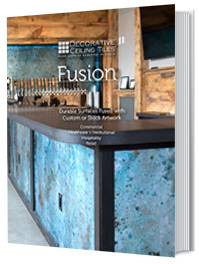The Festival of Lights
Written by Milan Jara on 20th Dec 2011
Hanukkah, also known as the Festival of Lights, begins at sundown today. It is one of the most celebrated holidays of the Jewish calendar.
The Story of Hanukkah
Hanukkah celebrates the re-dedication of the temple of Jerusalem in 165 BC. The King of Syria, Antiochus IV Epiphanes, had defiled the temple by dedicating it to worshiping the god Zeus. Antiochus did not just forbid the Jews to practice their religion; he even set up an altar to Zeus on the temple’s high altar. When the Hebrew hero Judas Maccabee recaptured Jerusalem three years later, he purged the temple and had a new altar set up in place of the old one. He then ordered the temple to be rededicated with a festival that lasted for eight days.
Judas Maccabee also ordered the Jews to relight the temple’s menorah, a candelabra whose eight candleholders represent knowledge and creation. (The ninth branch is called the shamash or servant light, and it is used to kindle the other branches.) According to the legend, there was only enough untainted oil to keep the eight candles burning for a one day. Because only the purest olive oil could be used, only the first drop from each olive was taken. This meant that it took an entire week to make a new batch to replace the tainted oil. Miraculously, the little untainted oil that was left lasted for eight nights, enough time to make a new supply. To this day, Jews celebrate the yearly festival by lighting one additional candle each night until the entire menorah is burning brightly.
A Joyous Festival

Hanukkah is a joyous family holiday that is celebrated with special foods, games, gifts, and songs. Each evening after the menorah is lit, children receive small gifts, or money or chocolate coins called Hanukkah gelt (Hanukkah money or, literally, small change) from their parents. Foods such as potato latkes (pancakes) and donuts are fried in oil to commemorate the miracle of the oil.
Traditional songs are sung and traditional games (such as dreidel) are played to remind family members of the events that took place in Jerusalem so many centuries ago.
The Symbolism of Blue
One of the most popular of Jewish symbols is the color blue, which stands for purity and the law.
Blue and white braid appears on the Israeli flag and on the tallit (prayer shawl). In addition, many Jewish men wear the blue braids on their yarmulkes (skullcaps). The blue and white braid on the tallit and yarmulke lets the world know that the wearer believes in and belongs to God. It also stands as a symbol to the wearer that, as a believer, people will judge him by higher standards. Blue and white also symbolize the pure life that Jews can lead when they follow the laws of the Torah.
Blue Tiles and Backdrops
One of the ways you can show your dedication to Judaism is to use the color blue in your place of worship, your business, or your home. Ceiling tiles and photo backdrops come in so many different and beautiful shades of blue, as well as silvery clear-coated aluminum or tin-plated steel, that there is sure to be one that is just right for you.

Some of the shades of blue available are aquamarine, sapphire, Sea of Blue, Sky Tones, and Pacific Tide. These tiles are ideal for restaurants, delicatessens, homes, and even meeting rooms in synagogues. Any of these colors would also make a lovely background for holiday, bar mitzvah, or family photographs.
Whether you are celebrating Hanukkah, decorating a large or small room, or looking for a creative background for your photographs, we are sure you will find a tile in a shade that is just right for you as you celebrate this happiest of Holy Days. Happy Hanukkah!




